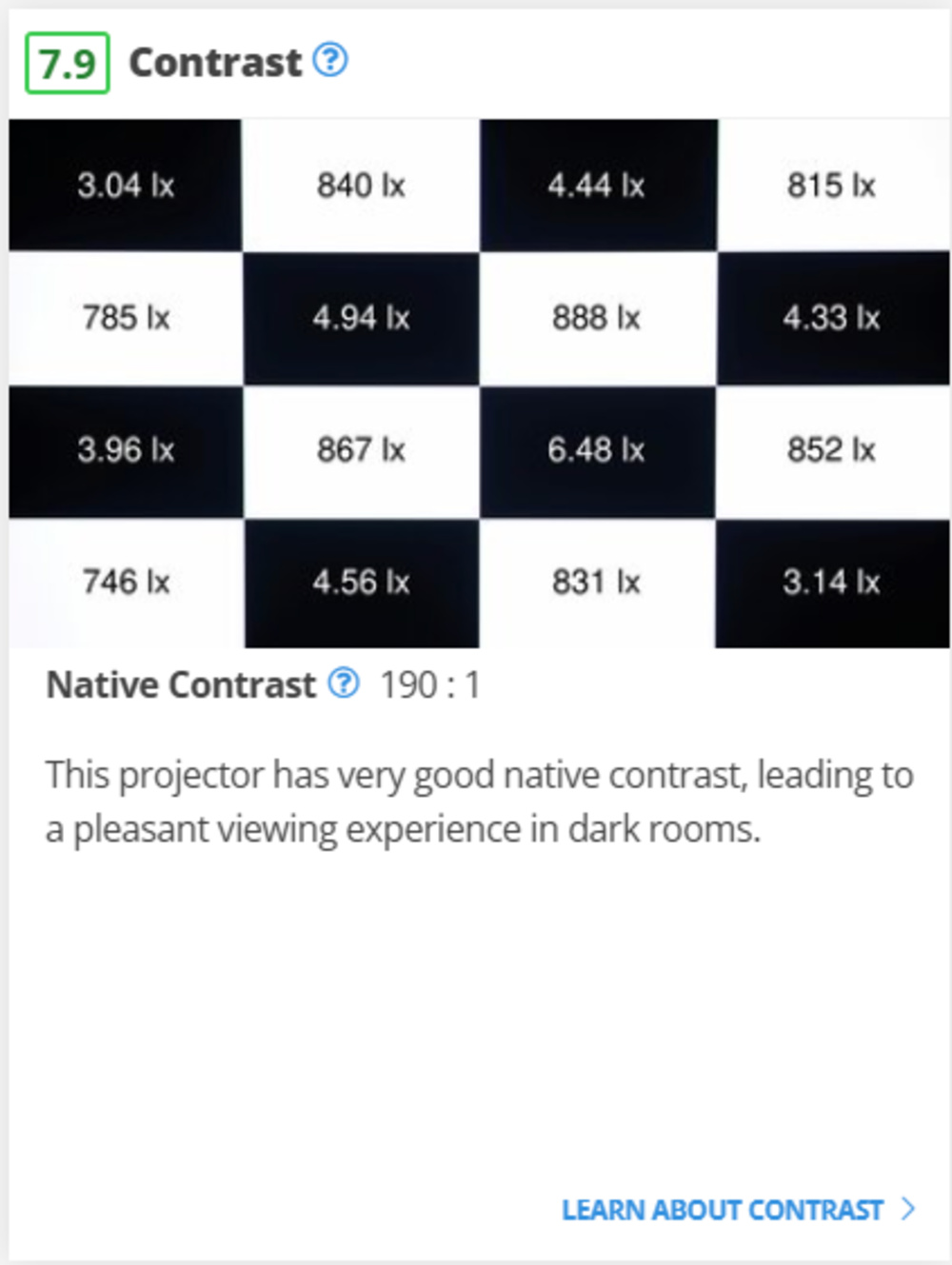See the initial 0.8 changelog.
What's Changed?
We've expanded our contrast measurements to cover various Average Picture Levels (APLs). Simply measuring contrast on a 50% APL checkerboard—how we used to do it in Test Bench 0.8—doesn't fully reveal how the projector performs in scenes with different APLs. The effective contrast ratio decreases as the APL increases (meaning, as the scene gets brighter). This phenomenon occurs due to a few factors, including light leakage within the projector's central optical system and light reflecting off the environment onto the screen.
Initially, we only measured contrast with a 50% APL checkerboard for several reasons. First, it closely followed the industry standard ANSI Contrast measurements, which also focus on a 50% APL checkerboard. A 50% APL serves as a good midground for evaluating a projector's contrast performance because movie content often falls below that, into the 5% to 15% APL range, or goes above 50% in brighter scenes. Additionally, limiting our contrast tests to a 50% APL acted as a stress test for our initial projector silo release. We aimed to have a robust yet straightforward batch of tests for launch, with plans to expand them later. Ultimately, we always intended to add contrast measurements at multiple APLs. By doing so, we gain a clearer understanding of the projector's performance across a wide range of scenes, from very dark to brighter ones.
You can read our contrast article for more details on our methodology and why we made these changes, or you can read our launch article for more information on our initial methods.
CONTRAST
- We now measure contrast at six different APLs: 1%, 5%, 10%, 15%, 25%, and 50%
- Replaced the 50% APL checkerboard picture with a graph tracking the Native Contrast Ratio at each APL
38 Projectors Updated
We have retested popular models. The test results for the following models have been converted to the new testing methodology. However, the text might be inconsistent with the new results.
- Anker Nebula Capsule 3 Laser
- Anker Nebula Capsule Max
- BenQ GV30
- BenQ HT2050A
- BenQ HT3550
- BenQ HT4550i
- BenQ TH671ST
- BenQ TK700STi
- BenQ X3000i
- Epson EpiqVision Flex CO-W01
- Epson EpiqVision Mini EF12
- Epson EpiqVision Ultra LS300
- Epson EpiqVision Ultra LS800
- Epson EX3280
- Epson Home Cinema 1080
- Epson Home Cinema 3800
- Epson Home Cinema 5050UB
- Formovie THEATER
- Hisense C1
- Hisense PX1-PRO
- KODAK LUMA 150
- KODAK LUMA 350
- Optoma GT1090HDR
- Optoma UHD35
- Optoma UHZ50
- Samsung The Freestyle 2nd Gen
- Samsung The Premiere LSP7T
- VANKYO Leisure 3
- VANKYO Leisure 470
- ViewSonic PX701-4K
- XGIMI AURA
- XGIMI Elfin
- XGIMI Halo+
- XGIMI HORIZON
- XGIMI HORIZON Pro
- XGIMI HORIZON Ultra
- XGIMI MoGo 2
- XGIMI MoGo 2 Pro


Comments
Test Bench: APL Contrast: Main Discussion
What do you think of our article? Let us know below.
Want to learn more? Check out our complete list of articles and tests on the R&D page.